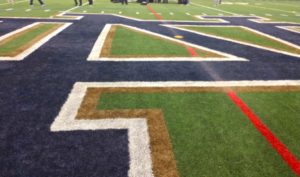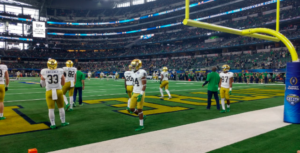New transfer rules are coming to the NCAA, and they could have an outsized effect on the world of NCAA Football.
During SEC Media Days, the announcement came down from the NCAA that, following the Division 1 Council recommending that the pre-existing limit on number of transfers for each individual in the transfer portal be eliminated. While the transfer rules have not yet gone into effect, it’s expected that the NCAA will approve the motion during their meeting in early August.
This recent decision is coming on the heels of the already recently relaxed guidelines on athlete transfers. There are, as with everything else with the NCAA, critics and supporters on both sides of the issue, with some detractors feeling that it will lead to athletes playing for four teams in four years and not having loyalty or dedication to their programs, while supporters acknowledge that any other college student is welcome to transfer to different schools as they see fit, and if the “student” part of “student-athlete” is to be recognized, college athletes need to be given that same freedom.
The reality of the new rules is that they will likely affect only a small number of players, as the academic transfer requirements will be difficult for any player to meet multiple times within one college career. Beyond that, incoming transfers will have to be guaranteed financial aid for their five-year window of eligibility, reducing the viability for many programs to encourage consistent transfers between players.
Recent Rivals Turned Unlikely Allies
In other recent news, Nick Saban and Jimbo Fisher have seemingly buried the hatchet and put existing grievances aside as they unite to try to standardize NIL policies across the world of NCAAF.
Fisher noted that “”NIL, there’s no rules…each state has its own rules. It’s not just an NCAA thing or a national thing … It’s just the world we’re in because there’s no unification of what happens and the way it happens.”
While there’s clearly something there, the biggest reason for “The Beef,” as it has been called in the media seems to have been the business of the NCAA and college football in particular now being brought into the light. While backroom deals and boosters used to help determine which teams reached the highest of highs, the NIL has now put everything out in the open and turned it into a visible numbers game. While there are certainly positives to that, particularly for those in the “college athletes should be compensated” camp, there are also downsides – the lack of current regulation on how much can be spent and by whom means that the richest schools and those who draw the most revenue from NCAA athletics will commit the greatest resources to building teams, and could potentially turn NCAAF into a much less competitive sport.
According to Fisher, the pair has “moved on”, which is positive news considering they were together at LSU in the early 2000s. In a climate in which recruiting has changed entirely following the new NIL rules, there will likely be additional dust ups between coaches and organizations like the one between Fisher and Saban. But, for the time being, college football’s most vocal beef has seemingly been laid to rest.


